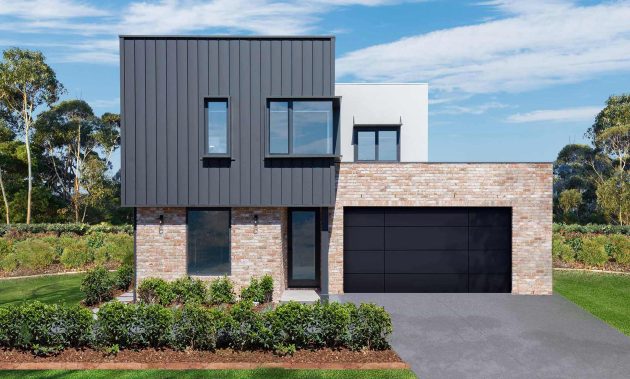
They say that a first impression goes a long way. The saying especially applies to your home and what your friends and family see when they visit. Home improvement projects can be challenging but worth the time and effort. If you’re thinking about remodeling, use this guide to learn how to choose the perfect façade for your next project.
What Is a Façade?
Start with the word façade. It’s a French term referring to the front or face of a building. You may also recognize it from the Italian word “facciata,” meaning the exterior of a building. In architecture, your façade is one of the most critical in design. Again, it’s your first impression when you see a house. So the façade gives guests an introduction to what the rest of the house will look like.
How Should You Choose a Façade?
Imagine your home like an art canvas. You can take your brush and paint it any way you choose. With a façade, there are numerous options you can take to put your personal touches on a home. Use these X factors to decide how you’ll approach a façade.
1. Exterior Style
The first factor to consider is what style you’re going with on the exterior. Start by picking a color to go with your façade. You can choose from numerous colors and tones to make your house look warm and appealing.
For example, you could select colors that give earthy tones. This design provides your home a darker scheme that contains a brown-related color. For example, earth tones could include gray, olive and beige colors. Earth tones on your exterior give an inviting feeling to anybody who drives by.
2. Interior Style
After choosing the exterior, try to match the interior so the design of the house flows throughout. Design your floor plan to complement the façade. Guests and potential buyers will appreciate a seamless transition from the outside into the interior. Using earth tones outside, keep the same theme on your interior walls.
Some homeowners think down the line and make plans to sell their homes. If you’re considering resale value, you can consider interior design for your façade projects. A 2022 report from Open Door shows 77% of buyers nowadays prefer brightly colored accent walls. In comparison, only 37% desire an all-white interior. So feel free to wear charcoal accents or shades of gray for your interior.
3. Building Materials
The next consideration for your façade is the building materials. Remember that first impressions go a long way in your home’s appearance. The materials composing your house affect the façade’s display and practicality. Some materials you may choose include:
- Brick: Brick is one of the most common building materials on façades. They’re terrific if you’re going for a traditional look. With brick, you’ll get durability and resistance to fire. Generally, brick is low-maintenance, so you won’t have to worry about it over time. Though brick does have a higher carbon dioxide (CO2) impact than other building materials.
- Wood: People have used wood on their façades for thousands of years. Wood cladding is a popular choice if your aim is a rustic look. A lighter wood gives a contemporary feeling, while darker colors present a rugged scheme. Wood is terrific for energy efficiency, and you can reduce the environmental impact by sustainably sourcing it.
- Stone: Stone is another building material dating back to ancient times. With stone, you get a very low-maintenance façade. Stone is powerful and water-resistant due to its non-porous qualities. Also, stone is an energy-efficient material because of its natural insulating properties.
4. Climate
In conjunction with building materials, think about climate when designing your façade. Some materials can withstand hot or cold, humid or dry conditions better than others. When considering longevity, the environment will play a significant role in determining which one you select.
For example, brick is highly resistant to adverse weather conditions. So it’s fitting for wet climates that experience heavy rain and wind. If you focus on weatherproofing, select concrete because it’s incredibly durable. Concrete and brick are also highly suitable for humid climates because they won’t warp when it’s humid outside.
5. Lighting
After deciding on building materials, you’ll want to focus on the more minor details, like the decorations. For example, what lighting fixtures can you implement to make the façade look pretty, especially at night? Façade lighting has two goals: illuminating the house to show off its beauty and providing security.
Outdoor lighting can be an excellent way to improve your façade’s appearance. Start by getting small fixtures like lanterns or ceiling-mounted lights. These options are terrific because they provide light and personality to a front porch. Nowadays, you can find solar or LED lighting fixtures to promote energy efficiency. LEDs are optimal for security and energy efficiency because they’re incredibly bright but last 30 times longer than incandescent bulbs.
Another choice you have is string lights. These fixtures are inexpensive but provide a festive feeling on your façade. You can hang them from the ceiling or wrap them around the porch. String lights are an easy way to create warm vibes from your façade. Another use for string lights is if you’re designing a garden or decorating your patio.
Perfecting Your Façad
Your home’s appearance is essential because it gives a glimpse into who you are. Utilize home improvement projects to improve your façade and give your home personality. Refer to this guide for five things you should consider when choosing the perfect façade.














